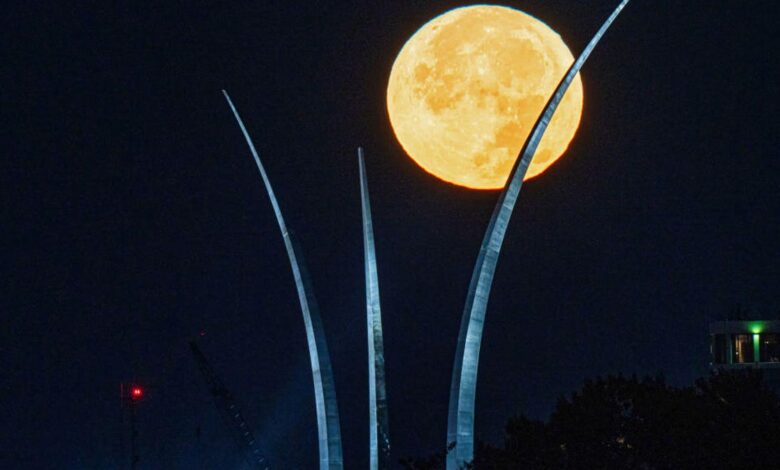Monday’s full moon is a rare super blue moon: here’s how to see it

The last few weeks of August are shaping up to be a doozy for astronomy fans. Saturn and the moon meet on Tuesday night, a planet parade is scheduled for August 23, and there will be a meteor shower at the end of the month. The show starts on Monday, though, as the full moon on August 19 will be a rare seasonal blue moon that is also a supermoon.
If you can’t see the moon on Monday night, it will still be bright enough for the next few days. On August 20, there will be a moon that 98.8% vol and the August 21st Moon will be 94.7% full.
What exactly is a supermoon? The moon will appear larger and brighter than the average full moon tonight. The moon’s orbit around the Earth is elliptical, meaning that sometimes it is closer and sometimes it is farther away. When the moon is closest, it is called its perigee. When a full moon is relatively close to the moon’s perigee, it is called a supermoon.
Supermoons appear physically larger in the sky and are noticeably brighter than average. A minimoon, on the other hand, occurs when the full moon is closer to its furthest point, known as apogee. Minimoons are smaller and fainter than average. NASA says that supermoons occur about three to four times a year.
The supermoon is also a seasonal blue moon. You may be familiar with the concept of a blue moon as the phenomenon of two full moons in one month. A seasonal blue moon works the same way. Seasons last about three months, so we can usually expect three full moons. However, the summer of 2024 will have four full moons, meaning we have a blue moon on our hands.
The first full moon of summer occurred on June 22, just two days into summer. Due to the way the moon’s 29.5-day cycle is synchronized, this means that the fourth and final full moon of summer will occur on September 18, just four days after the first day of fall. Normally, the June or September full moon occurs in a different season, giving summer three full moons. Seasonal blue moons occur around once every two or three years.
Tips for viewing the supermoon
For most of the US, the moon will have risen or is rising by the time the sun sets in each region. However, the best time to view the moon is around 10:00 to 11:00 PM local time, which gives the moon some time to rise into the sky. From there, you can view it all night long.
Each month has a full moon and a name associated with it. In June it is called the Strawberry Moon and in July it is called the Buck Moon. In August it is called the Sturgeon Moon. It is named after the fish, one of the oldest species of wild animals in North America. At 250 million years old, the sturgeon is often referred to as a living fossilIt is also the largest freshwater fish on the entire continent.
According to The Farmers AlmanacThe August moon is called the sturgeon moon because fish are easier to catch in this month and were an important staple food in times gone by. Sturgeon were much more numerous then than they are now, but we still call the August full moon a sturgeon moon.
How rare is a blue supermoon?
Any event in a vacuum is not that rare. Supermoons occur three to four times a year, while seasonal blue moons occur about every 2.5 years. The two events that occur together, on the other hand, are less common. The last blue supermoon took place in August 2023, so we’ve had one two years in a row.
We won’t have one in 2025 or even 2026. The next blue supermoon is expected to occur in May 2027.



